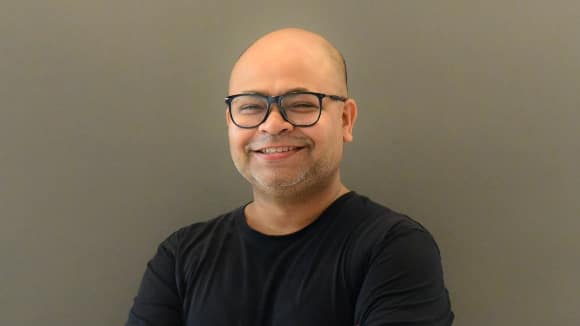India’s digital health is shifting from rapid growth to profitability, driven by AI, patient education, and integrated insurance literacy. Key focus areas include combating misinformation, using localized content, leveraging grassroots trust, and enabling informed health decisions.

Sudipta Sengupta, Founder & CEO, The Healthy Indian Project (THIP)
Shahid Akhter, Consulting Editor, FEHealthcare, talks to Sudipta Sengupta, Founder & CEO, The Healthy Indian Project (THIP), to discuss key trends shaping India’s digital health ecosystem, challenges in health communication, and strategies to boost insurance literacy.
What key trends are shaping India’s digital health ecosystem today?
India’s digital health ecosystem has been driven largely by new-age startups, not traditional healthcare players. Today, the sector is undergoing significant shifts—shaped by the funding slowdown of the past two years, a decisive pivot from growth-at-all-costs to profitability, and the rapid, daily transformation of healthcare through AI innovation. So, it is not surprising that we are seeing a lot of digital players now taking the plunge into traditional healthcare delivery models.
Another encouraging shift I see among many new-age startups is their growing focus on customer and patient education. Health literacy has long been a public health priority, but now more health product and service companies are going the extra mile to educate their users. This is a welcome change. In fact, this is a space we also operate in at THIP, delivering credible health knowledge through chatbots, micro-courses, and vernacular videos, making educational health content as easy to access as entertainment.
What are the main challenges in making health communication more accessible and credible for diverse populations?
India’s diversity is both our strength and our challenge. Different regions, languages, literacy levels, and cultural contexts mean a single “one-size-fits-all” approach fails. Add to that the overwhelming amount of health misinformation online, and trust becomes a rare commodity. The key is to contextualize medical facts in culturally relevant ways—through local language content, relatable examples, and formats people actually consume.
A lot of us are hoping that AI will bring in solutions to this challenge. But to what extent depends a lot on policymaking, adaptation of technology, and awareness building. We need to understand that internet penetration and digital literacy in our country are still very low compared to first-world countries. A lot of people in the country have already started taking up health suggestions from AI chatbots without understanding that these chatbots are great technology but may not be the best content source.
Why does insurance literacy continue to lag in India, and what approaches are helping bridge this gap?
Insurance literacy suffers because products are complex, jargon-heavy, and historically sold in transactional ways rather than explained in human, life-context terms. Most people buy insurance without fully understanding what it covers—or worse, they avoid it entirely because of mistrust or confusion. We’ve found that embedding insurance education into everyday health literacy conversations works far better than stand-alone campaigns. For example, when we explain preventive health, we also explain how health insurance supports it. We find that this approach has better acceptability among people who are otherwise averse to insurance products.
What opportunities do you see in using content as a tool to improve insurance understanding and decision-making?
Content is the bridge between technical policy documents and everyday decisions. The opportunity is to turn that bridge into a two-way highway—not just explaining products, but helping people make informed choices. That means interactive, scenario-based content, comparison tools, and short, vernacular videos that explain concepts like “deductible” or “waiting period” in under a minute. At THIP, we’re exploring embedded content journeys—where a user learning about diabetes management is automatically shown insurance options relevant to chronic care. This isn’t just marketing; it’s integrating insurance into the broader story of health preparedness.
How are grassroots communities helping expand the reach of health and insurance education?
Grassroots communities are the trust engines of health communication. Whether it’s a WhatsApp group in a small town or a local women’s self-help collective, peer trust often outweighs official sources. We’ve built and moderated disease-specific and health-interest communities—from diabetes to PCOD—where credible content circulates organically, questions get answered in real-time, and misinformation gets challenged immediately. By integrating insurance education within these community discussions, we can gradually help bring the shift. This approach has proven powerful in introducing insurance literacy—members trust the group enough to ask the “embarrassing” questions they’d never pose to an agent.
What new opportunities is THIP exploring in the next few years as health content integrates with policy and insurance?
We see two big plays ahead. First, policy-linked health literacy platforms—where insurance buyers get ongoing health education as part of their policy benefits, improving preventive health outcomes and reducing claims. Second, AI-powered personalized advisory, blending a person’s health profile, medical history, and policy coverage to give real-time guidance. The overall objective is simple—use education as a primary tool to help people make better decisions, be it on health or health insurance. Our north star is simple: whether you are learning about your blood pressure, your policy coverage, or your treatment plan, you do it in one trusted, comprehensive THIP ecosystem.
By continuing you agree to our Privacy Policy & Terms & Conditions
